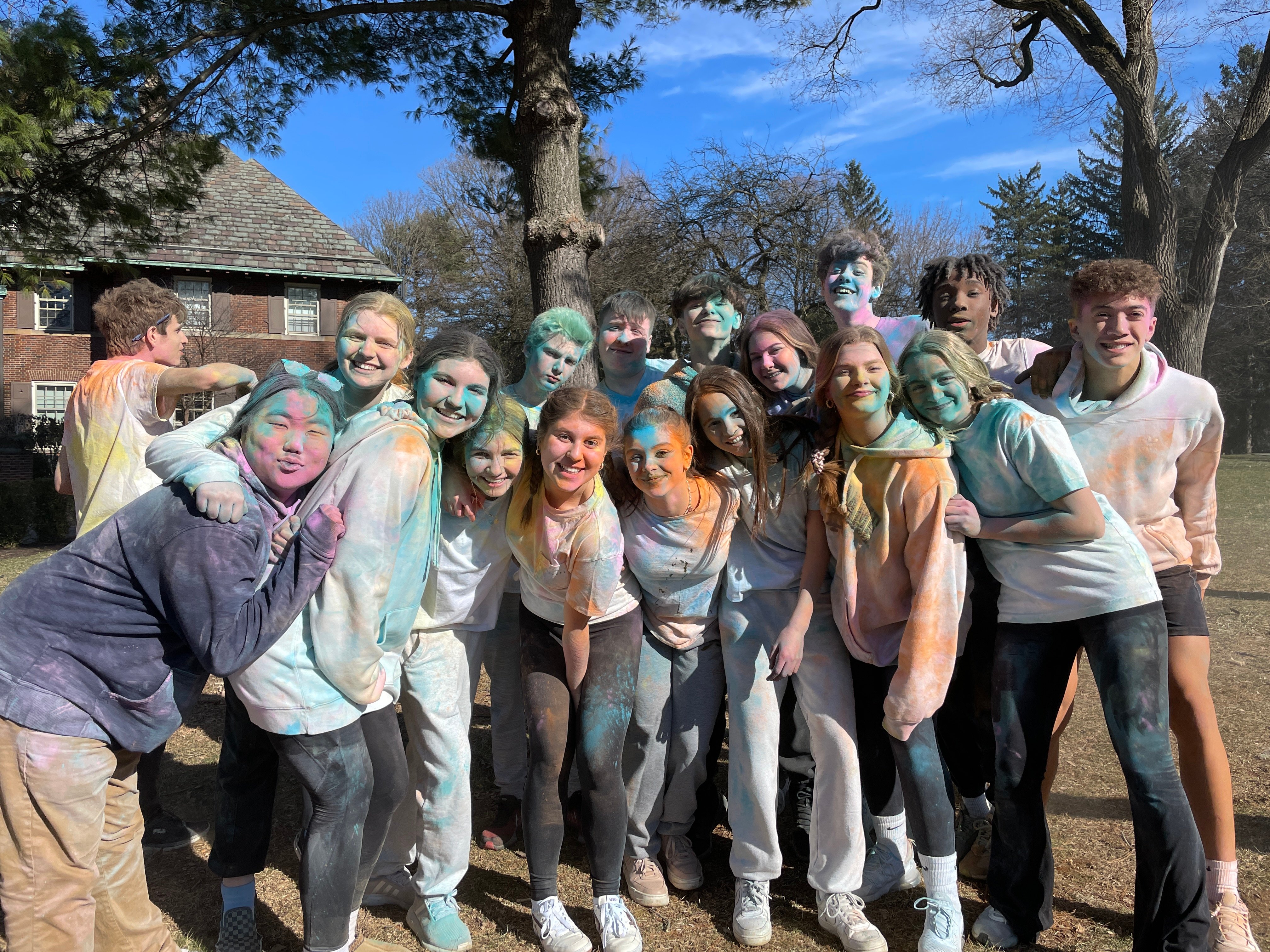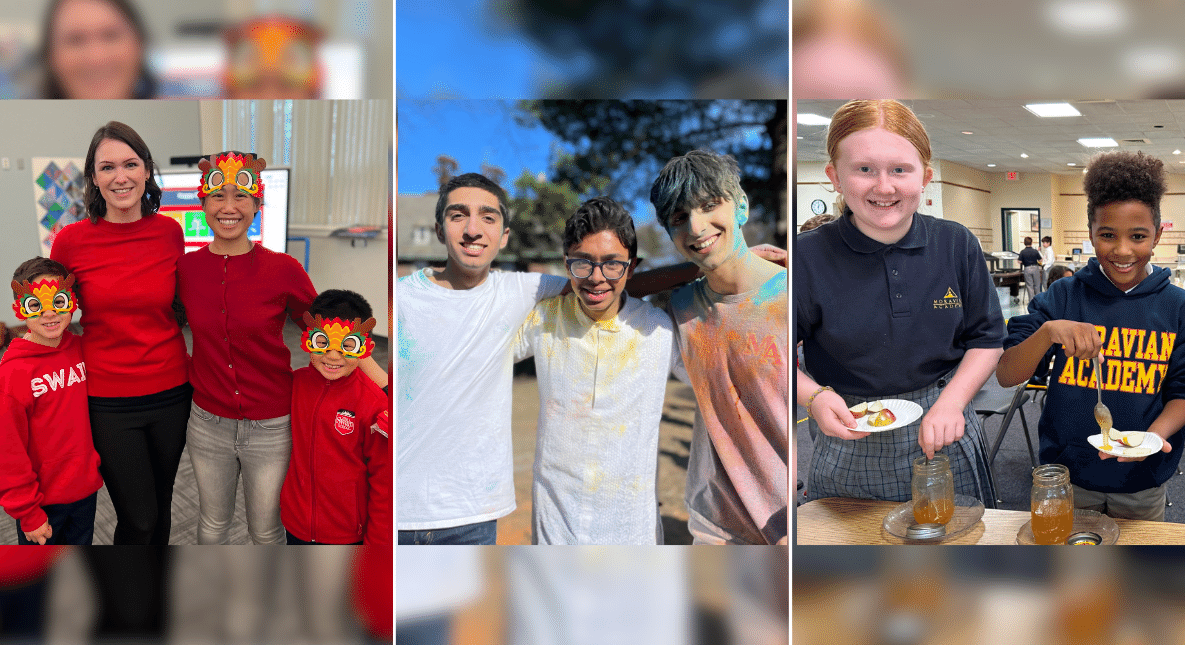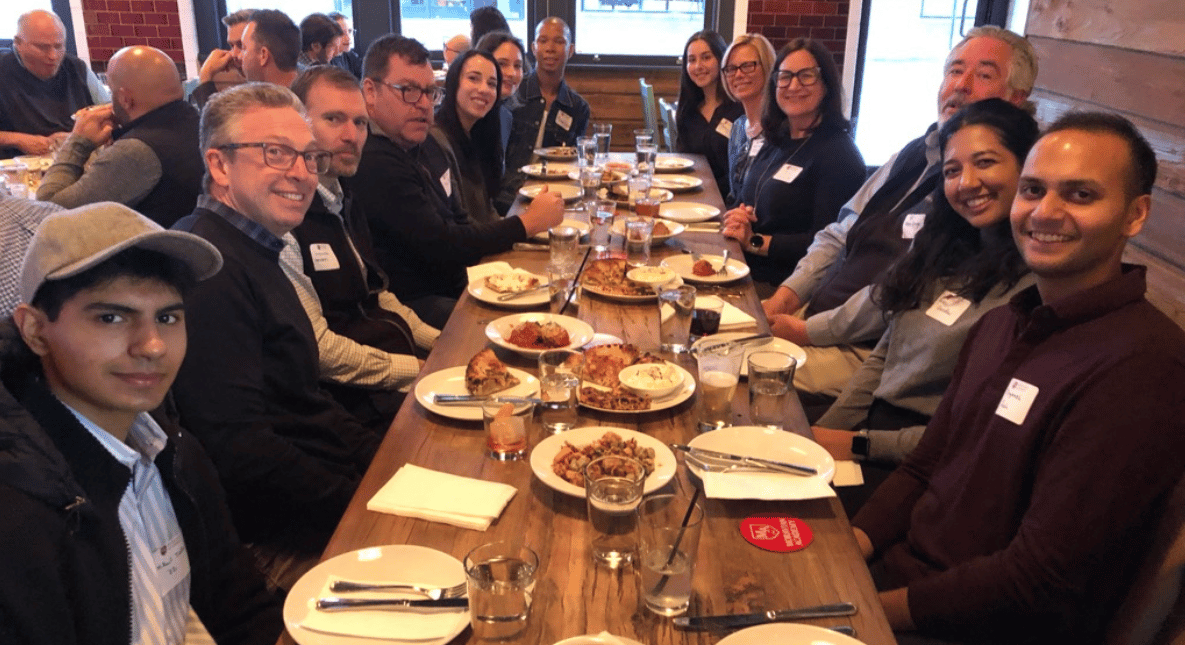Shared Stories & Common Ground: The Gifts of Our Interfaith Community
Around the middle of Spring Break, my family was star-gazing from our campsite and spotted the crescent moon.
“Look, it’s Ramadan!” I said, “Happy Ramadan to everyone who celebrates,” said my third-grade daughter. “Yes, happy Ramadan!” said her twin brother. Then we went on, trying to pick out the constellations the Park Ranger had shown us the night before. I am an ordained Christian minister, raising my kids in the church, so this might seem like an unusual moment for us, marking the start of a holiday we don’t celebrate. We do each know and love at least one person who is a Muslim, and while we don’t celebrate Ramadan, we celebrate them. This is a gift we have received from Moravian Academy.
Ours is an interfaith community. We welcome and include people from all faiths, and none; those who find their higher power in the strength of friendship or the wisdom of humanity. The value I most appreciate about our school is that we don’t just make room for one another; we celebrate and learn from each other.  Sometimes that looks like a student, sharing her Hindu traditions with her classmates. Sometimes that looks like a visiting Rabbi, shaking the Lulav or leading a Passover Seder. Sometimes that looks like students, parents, faculty and staff members gathered for the evening to welcome the Lunar New Year with poetry, music, and food. From student panels and presentations to class projects and community events, there are many ways that we celebrate and share.
Sometimes that looks like a student, sharing her Hindu traditions with her classmates. Sometimes that looks like a visiting Rabbi, shaking the Lulav or leading a Passover Seder. Sometimes that looks like students, parents, faculty and staff members gathered for the evening to welcome the Lunar New Year with poetry, music, and food. From student panels and presentations to class projects and community events, there are many ways that we celebrate and share.
Holidays tend to come in clusters. That’s often because throughout human history, diverse cultures around the world experienced similar longings at similar times of the year. In the late Fall, as the days grow shorter across the Northern Hemisphere, there are beautiful celebrations of light to help keep us in balance. In the Spring, Easter, Passover, and Holi share common themes of liberation, renewal and new life. One of the things these Spring holidays have in common is that they all occur on different dates in different years. That’s because they each follow a lunar calendar, rather than the wall calendar we are more familiar with (which is based on the earth’s course around the sun). Each tradition builds its calendar in a unique way.
For example, Ramadan is a specific month on the Islamic calendar. In Muslim tradition, it is the month when God first gave the Quran to the Prophet Muhammed as a revelation for humanity. The month of Ramadan is a sacred time of fasting, prayer, and communal gatherings. This year it is celebrated in the Spring, but it isn’t always. Ramadan rotates around the solar year, and is celebrated in every season. On the wall calendar, the month of Ramadan begins about ten days earlier each year, compared to the last, because the lunar year is about ten days shorter.
In comparison, on the Jewish calendar, the festival of Passover begins on the 15th day of a month called Nisan, also based on the moon. Unlike Ramadan, it does not rotate around the solar year. Rather, the Hebrew Bible commands that Passover be celebrated in the Spring. To keep it there, every few years, an extra month is added to the Jewish calendar. 2024 is a Jewish leap year, meaning that next year, Passover and Easter, often celebrated at the same time, will be a month apart. This seems strange to those who know the Easter story. On the night of his arrest, Jesus was gathered with his disciples for a Passover Seder, an elaborate dinner and story-telling experience that marks the season, recalling the journey of Moses as he led the Hebrew people out of slavery. Jesus used bread and wine from the Seder table to inaugurate Communion, an enduring Christian Sacrament. Surely these two holidays should be linked in our timeline as they are in our narratives. At the First Council of Nicaea in 325 CE, the Christian Church decided to set its own date for Easter and not rely on the Jewish calendar. (We should not overlook the possible anti-semitism here.) Thus, for the last 1700 years or so, we have celebrated Easter on the first Sunday after the full moon that occurs on or after the spring equinox (March 20). If the full moon falls on a Sunday, then Easter is the next Sunday. Easter can be as early as March 22 or as late as April 25, unless you are an Orthodox Christian, and then there’s a separate but similar system for calculating the date.
Finally, in Hindu tradition, the Spring festival of Holi is also celebrated on the full moon. This festival is a favorite on our Merle-Smith Campus, where we celebrate every year by “playing Holi”. This involves throwing colored powder at one another as a symbol of connection and joy. The date of Holi each year falls in the lunar month of Phalguna (which corresponds with either February or March depending on the year).

Full moon or new moon, feast or fast, Passover Seder or a Passion play; we have a choice when we talk about these four traditions, and others like them from cultures and religions around the world: we can focus on what separates us, or on what we hold in common. Think for a moment about our ancestors, hundreds and even thousands of years ago, all marking time by the cycles of the moon, enveloped by the meaning and mystery of the night sky. Now, when I look up at night, I feel a spiritual connection to them, to those whose stories I inherited, and to those whose stories belong to my students and colleagues and friends. Our collective memory calls us toward remembrance and renewal, toward liberation and love, and toward a greater balance with the rhythms of the universe.
When we do consider our distinctives, toward a more complete education and a fuller sense of belonging, we have another choice: to set ourselves apart from one another, or to learn from and celebrate one another. In 1632, early Moravian thinker, John Amos Comenius, wrote that the “earth bears us all, even if we prefer to see the ground cleave asunder beneath our enemies,” and that, “The sun sends its rays upon us directly, paying no heed that we look askance at one another. The rose smells sweetly to the Jew and the Christian and to the Muslim too.” It’s a profound gift to have such forward, inclusive thinking as a building block for our modern school, especially as we seek a common identity from three unique and beautiful campus cultures.
We don’t all see or understand the world in the same way. Ancient Greeks looked up at the night sky and saw the shape of Orion, a legendary hunter. In Borneo, they saw a different kind of hunter, with a carrot and a trap, ready to catch a rabbit. In ancient Arabia, they saw this same constellation as the figure of a giant. Ancient Hindus saw Kaalpurush, a representation of the god Vishnu, the preserver and protector of the universe. The Navajo called these stars Atse Ats'oosi, “First Slender One." Atse Ats'oosi is a protector, pictured sometimes with a bow and arrow, ready to defend, and sometimes with a digging stick, ready to plant and grow food to feed his people. (I am grateful to Ranger Mark at the Virgin Islands National Park for his excellent and inclusive lessons on astronomy!).
No, we don’t all see the world in the same way, but because of that, we can be one another’s teachers, as well as one another’s friends and companions. We are, after all, a community dedicated to learning and growth. It’s a great privilege of our diverse community that we can learn from one another’s stories, and then return to our own with greater depth and insight.
How will you celebrate this Spring? With the colored eggs of Easter or the colorful powder of Holi? With a Seder plate or at an Iftar dinner? With renewed appreciation, after months of winter gray, for the green grass and bright flowers blooming on all three of our campuses? Whatever and however you celebrate, may this be a season of rejoicing, renewal, and new life. And maybe we can each take a few moments, one night soon, to consider the night sky that enfolds, embraces and connects us all. Neil deGrasse Tyson said it better than I can.


 myMA
myMA





.png)





